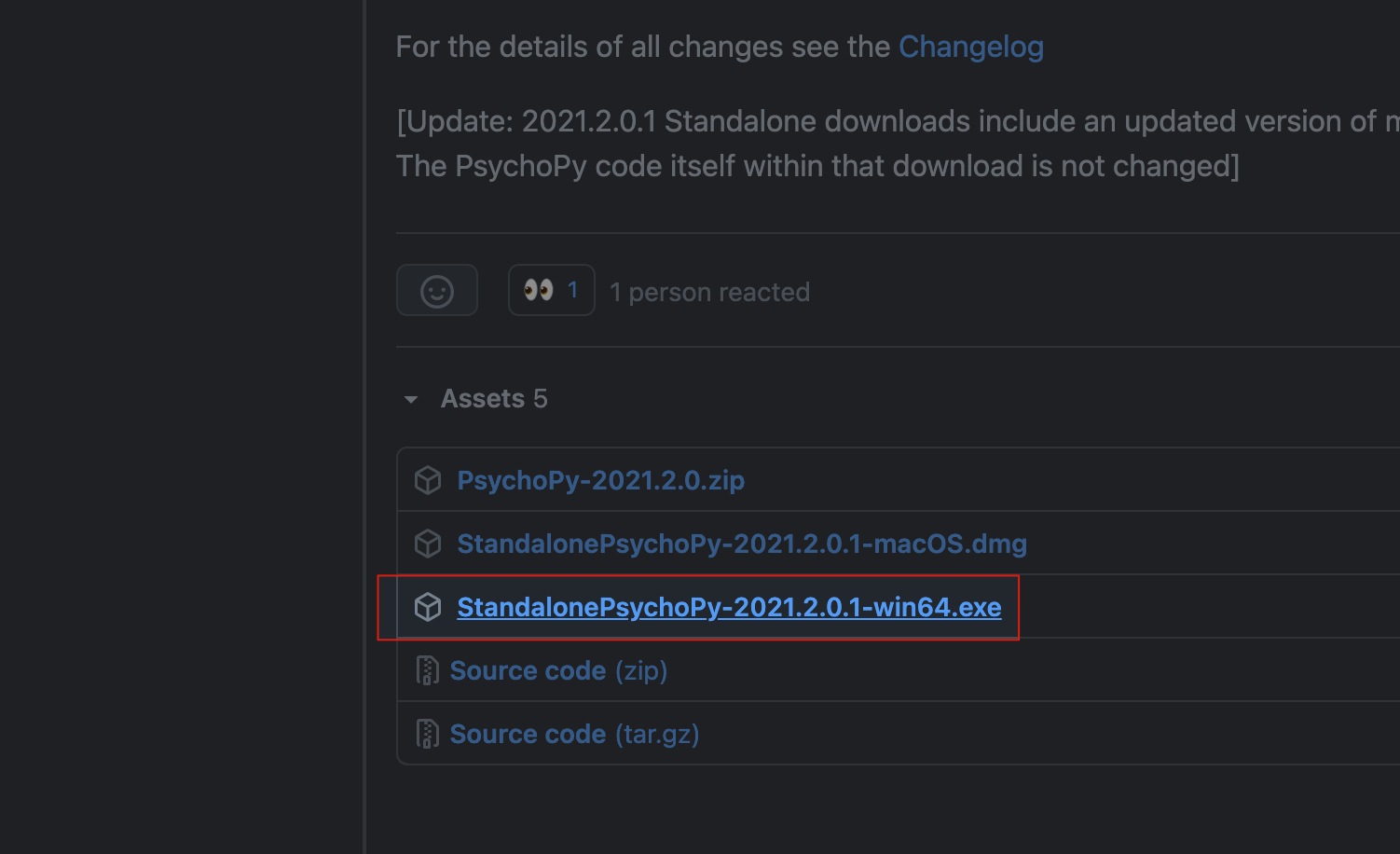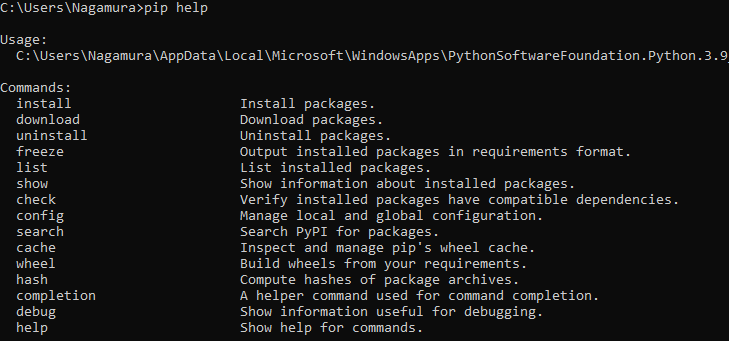Windows Specifications #
The background of my hardware specifications with the version of Python and PsychoPy I am using are shown below:
Edition: Windows 10 Pro
Processor: Intel(R) Core(TM) i3-2100 CPU @ 3.10GHz 3.10GHz
Installed RAM: 4.00 GB
System Type: 64-bit operating system, x64-based processor
OS Build: 19041.1052
Python: Python 3.9 64-bit
PsychoPy: v2021.2.0
Method 1. Install Standalone executable #
The first way to install PsychoPy is by using .exe file. Navigate to their github repository and find StandalonePsychoPy-2021.2.0.1-win64.exe

Open the PsychoPy app in your applications and it should open the PsychoPy builder.

Method 2. Install Python and Pip #
The second way to utilize psychopy is via the pip package. First check if pip is installed on your computer. You can do this using:
pip --version
If it isn’t installed, you should go to python.org and select the latest installer for python 3.9. My windows installation came with python 3.6.6 but not pip, so this might be the case for you. The site will auto-detect the OS of your machine so just select download. At the time of this post, the latest is Python 3.9.6. The installer will be an exe.

When you first run it, make sure to check Add Python 3.9 to PATH. This will add py to your environment variables so you can use the latest version of python in the command prompt.

2.1 Run in command prompt #
Once the setup is complete, you can ensure the latest version of python is running by typing python, pip --version or pip helpin a new instance of your command prompt:


If running python still gives you the pre-installed version of python (3.6.6 in this case), you can try running py. It should now show 3.9.6.
2.2 pip install PsychoPy #
Now that you have the latest version of python and pip on your computer, you can install psychopy using pip.
- Install PsychoPy via pip through cmd by typing
pip install psychopy- This will install psychopy as a global package. After running
pip list, you will seewheel,setuptools, andpsychopy(and psychopy’s dependencies) listed out.
- This will install psychopy as a global package. After running
- Create your designated project folder.
- Navigate to that folder,
right-click > new > folder
- Navigate to that folder,
- While in the command prompt, use
cdto change directory to the folder you created.- When you first open command prompt, you will be in your root directory.
- If you created the folder in your Desktop, then type:
cd Desktop/{Folder Name} - Run
ECHO >> main.py, which will create an empty python file called ‘main.py’.
- If you created the folder in your Desktop, then type:
- When you first open command prompt, you will be in your root directory.


- Open
main.pyusing any text editor of your choosing. Insert this code snippet (from the official docs) like we did in the macOS setup.
from psychopy import visual, core, event #import some libraries from PsychoPy
#create a window
mywin = visual.Window([800,600],monitor="testMonitor", units="deg")
#create some stimuli
grating = visual.GratingStim(win=mywin, mask='circle', size=3, pos=[-4,0], sf=3)
fixation = visual.GratingStim(win=mywin, size=0.2, pos=[0,0], sf=0, rgb=-1)
#draw the stimuli and update the window
while True: #this creates a never-ending loop
grating.setPhase(0.05, '+')#advance phase by 0.05 of a cycle
grating.draw()
fixation.draw()
mywin.flip()
if len(event.getKeys())>0:
break
event.clearEvents()
#cleanup
mywin.close()
core.quit()
While you’re still in the Project directory that you made earlier, you should type in python main.py in the command prompt. It should output a window with some test stimuli. Congrats, it now runs on windows!